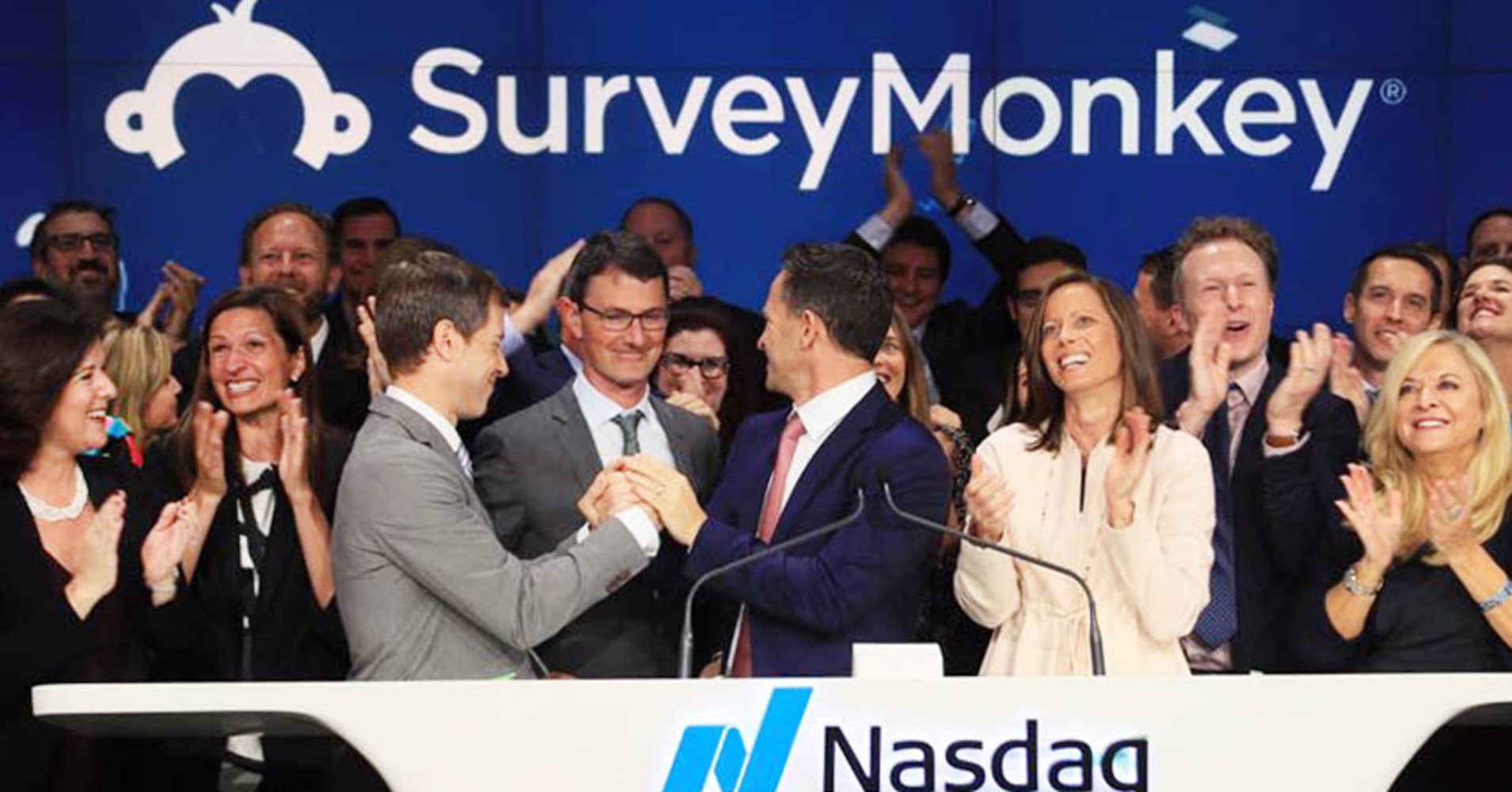
Most companies going public this year entered their debut with a history of losing money. But investors are embracing them anyway.
Through last Friday, 83 percent of U.S. companies going public the first nine months of this year lost money in the 12 months leading up to the IPO, according to data compiled by University of Florida finance professor Jay Ritter. Ritter, whose data goes back to 1980, said this is the highest proportion on record.
Still, the decision to embrace those companies has been rewarded for short-term investors. Money-losing companies listing on U.S. exchanges this year gained an average 36 percent this from their IPO price through Friday, according the Wall Street Journal, which first reported the data. IPOs for those companies with positive earnings gained 32 percent, compared to the S&P 500's 9 percent gain.
Investors' appetite for IPOs seems to only increase as giants like Uber and AirBnB stay private longer. Despite never posting a profitable year, Survey Monkey, jumped 40 percent after its public offering last week. Shares of money-losing biotech company Solid Biosciences meanwhile tripled after the IPO despite an announcement that one of its clinical trials had been put on hold, according to the Journal.
But these money-losing companies are less forgiving in the long run, according to Ritter.
"The average return on the first day has been about the same, but over the next three years the profitable company IPOs have beaten the unprofitable company IPOs by about 6 percent per year," Ritter told CNBC in an email. "This pattern of profitable IPOs beating unprofitable IPOs was also true in the 1980s and 1990s."
Ritter looked at thousands of IPOs that happened between 2001 and 2016. On the first day of trading, the unprofitable companies were almost in line with profitable ones, gaining an average 13.8 percent versus 14.2 percent respectively.
In the next three years though, the difference was stark. Unprofitable companies returned an average 12.6 percent, and underperformed the market by 9.7 percent, Ritter said. Profitable companies meanwhile returned an average 30.4 percent, beating the market by 7.9 percent, or by about 3 percent per year.
from Top News & Analysis https://ift.tt/2QlrdvC
No comments:
Post a Comment